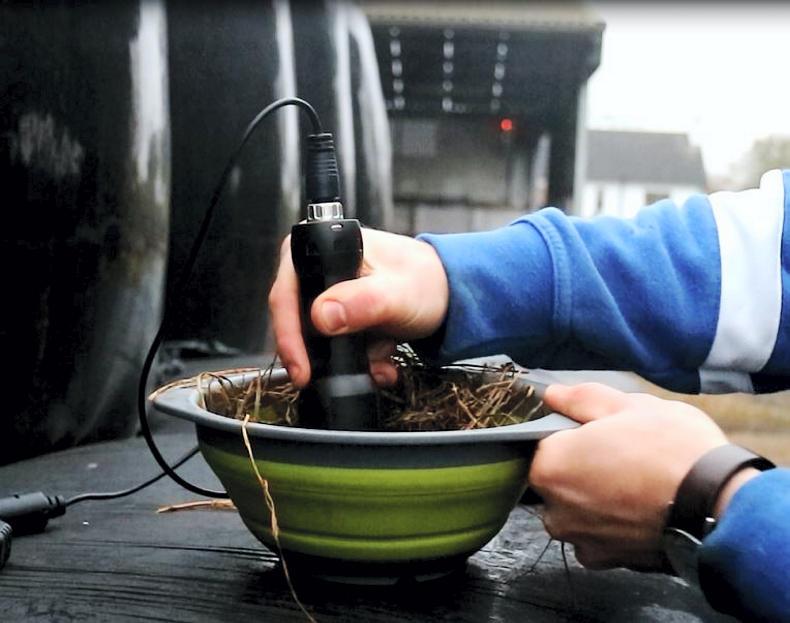I can think of just one silage feeding scenario where it is justifiable not to measure silage quality: if it is being offered as a roughage source to cattle on ad-lib concentrates.
Inaccurate feeding will lead to lost euros in every other situation. Even dry cows on a weight watchers diet, eating what is in your eyes the very worst silage you have, need their nutrition controlled. Improper condition will cost you money at calving and breeding.
The opinion on silage testing now is one of unnecessary effort. Though there has been a shift away from wet chemistry to faster, near-infrared spectrometry (NIR)-based testing, we are impatient creatures. Physically bagging a sample, taking it to our co-op or consultant and waiting for results is not appealing; not to mention the €20-30 bill per sample – though some feed mills have begun to offer the service free (once you’re buying lots of meal).
That’s all about to change. Now, the silage test can come to you.
UK agri-company AB Vista, in conjunction with its sister company Aunir, has succeeded in packaging the complete silage testing process into a portable, easy-to-use device.
“The device is called NIR4 Farm and there has been huge interest in recent months,” said AB Vista ruminant nutritionist Martin McConnell, a Cavan native.
“It works the same way as a standard NIR machine, passing beams of light though the material to analyse its nutrient content.”
Martin highlighted a flaw in current silage testing practices.
“At the moment, a farmer would get three or four samples from his pit face or bale stack measured. While it’s better than nothing, it probably isn’t enough. In truth, you could never take enough measurements – feeding value can fluctuate hugely in even the same clamp.
“The machine allows you to be a bit more liberal with the number you’re taking,” Martin said.
I can vouch for this, having borrowed Martin’s machine and run through 35 of my own samples in 1.5 hours.
“What it also does is to allow for diet formulation and changes to formulation instantaneously. A rep can visit the farm, take the samples and formulate on the spot,” Martin continued.
At €7,000 per unit, it is not something everyone will be rushing out to buy. But Martin is quick to point out two things regarding the cost, as well as another use for the device outside the yard.
“A couple of years ago these machines were €35-40,000. Of course, they’re not geared towards farmers. Feed mills are buying the machines for their sales reps and nutritionists in the field. However, we reckon that a 250-cow dairy herd could justify purchasing the equipment and we have had some farmer sales. The machine can test grass too and such a farmer can use it to correct dietary deficiencies throughout the season – fluctuations in fibre and protein for example – and keep their cows’ yields up.
The machine can measure the nutrient composition of grass, grass silage, maize silage, whole crop cereal silage and wet feeds.
What it measures
What will farming be like in 10 years' time?
How automated body condition score can reduce feed bills
Autonomous tractors: are they the future?
